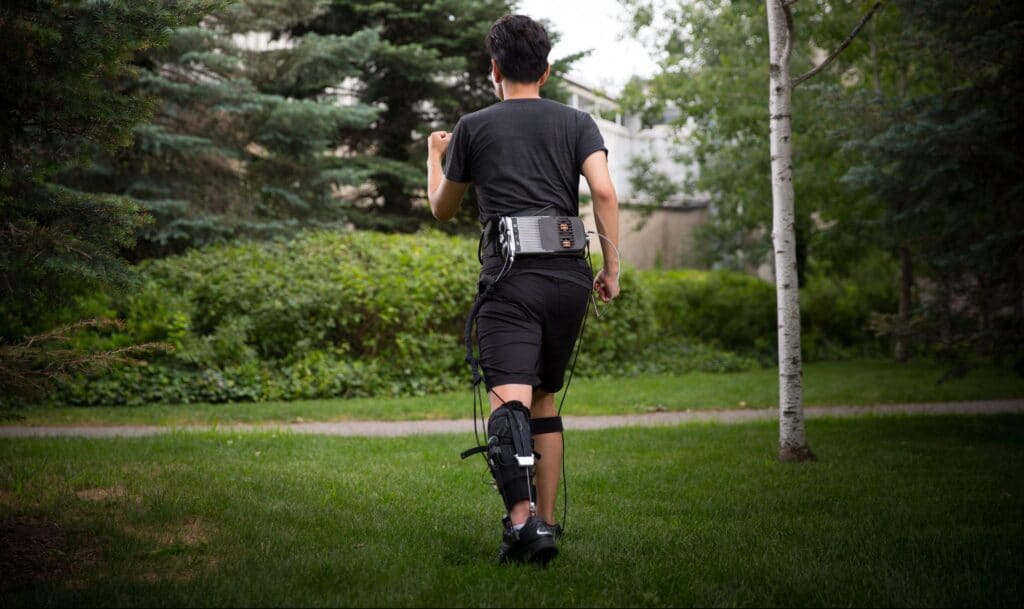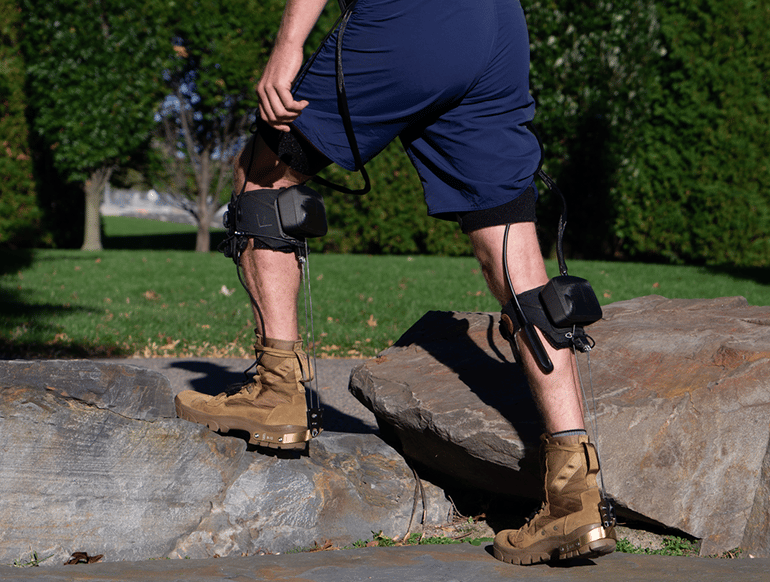At Harvard University, a team of scientists and engineers have perfected special exoskeletons that have been under study for more than two years. The devices use ultrasound to measure muscle activity: thanks to this ability, they quickly calibrate to the users' needs, supporting them in walking or running in an adaptive and precise way.
In fact, by directly measuring muscle dynamics, these exoskeletons know exactly how, when and how much to intervene, bringing this type of technology much closer to real application. This is good news, because the ones who will benefit first and foremost will be patients with neurological problems or muscular dystrophy.
Wearable exoskeletons, great potential

Assisting those with mobility problems by providing extra energy when walking or running is very important. And it is no coincidence that for some time there have been many laboratories that have been studying exoskeletons to apply them both in the military and civilian world. Currently, one of the biggest obstacles to their mass diffusion is calibration: each of us is different and has different needs, it is not easy to build a sufficiently versatile device. The uneven terrain, a different walk, many parameters that force exoskeletons to drastically change their requirements.
If you imagine a world in which anyone can wear "armor" like this and have it work immediately, you are off track. Currently, it takes hours of fine-tuning before these exoskeletons are ready for the needs of a particular user performing a specific task. This is also why Harvard's research (which has been going on for some time) is very important. Their exoskeletons know how to "read" the muscles of the wearer, and "personalize" themselves accordingly.
Look under the skin, adjust accordingly
“We used ultrasound to look under the skin and directly measure what the user's muscles were doing during different activities,” he says Richard Nuckols. He is one of the developers of the new exoskeletons, and in a Harvard press release he expresses his satisfaction with the results of this study. “Our muscles and tendons have compliance, meaning there is not necessarily a direct mapping between the movement of the limbs and that of the underlying muscles that drive their movement.”
The new ultrasound system is worn around a user's leg and begins to “read” underlying muscle activity. “From these images we estimated the assistive force to be applied in parallel with the calf muscles. A strength that compensates for the additional work that these muscles have to perform during walking,” he says Krithika Swaminathan, another researcher involved in the study.
These exoskeletons take just two seconds to accurately assess muscle activity. We are approaching ever lower latency, and we will arrive at a time when these gadgets will not appear to be “superimposed” on human activity, but will be perfectly integrated and enhance it in a practically invisible way.
Check out the technology in this video.


